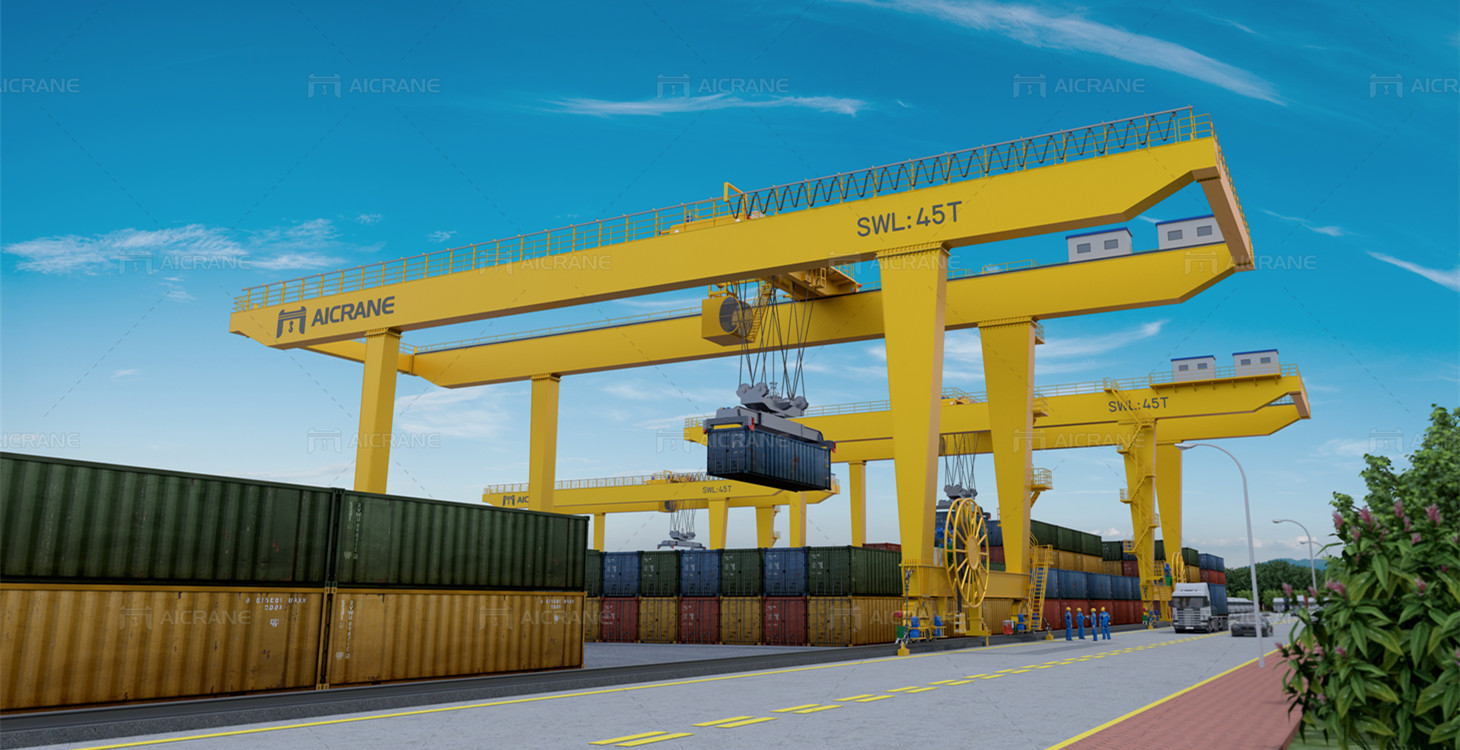Container gantry cranes are colossal machines that play a pivotal role in the global logistics chain, enabling the efficient movement of containers within ports and container yards. This comprehensive guide elucidates the inner workings of a container gantry crane, offering valuable insights into its functionality and operational procedures.

I. Structural Components:
1. Girder Structure:
The primary structure of a container gantry crane consists of one or two steel girders that span the width of the crane. These girders support the entire weight of the crane and the loads it lifts. Container gantry crane is usually double girder gantry crane.
2. Trolley and Spreader:
Attached to the girders is a trolley, which moves horizontally along the length of the crane. The trolley houses the spreader, a critical component that connects with the container for lifting and maneuvering.
3. Legs and Wheels:
Container gantry cranes are mounted on large legs equipped with wheels or rail-mounted trucks. These wheels allow the rail mounted crane to travel along rails, enabling it to position itself over containers.
II. Lifting Operations:
1. Approaching the Container:
The operator guides the container gantry crane over the designated container. Advanced models may use automated systems to facilitate this process.
2. Engaging the Spreader:
The spreader, typically equipped with twist locks, locks onto the container’s top corners. This ensures a secure grip before the lifting operation begins.
3. Lifting and Moving the Container:
The crane operator activates the hoisting mechanism, which raises the spreader, and subsequently, the container off the ground. The trolley and hoist mechanisms work in tandem to move the container horizontally, allowing precise placement.

III. Advanced Features:
1. Automated Systems:
Modern container gantry cranes often incorporate automation technologies. These may include laser-based positioning systems, GPS, and intelligent software that optimize container movements for efficiency and safety.
2. Anti-Sway Systems:
To counteract pendulum-like movements that can occur during lifting, advanced gantry cranes utilize anti-sway systems. These employ sensors and algorithms to stabilize the container’s motion.
IV. Safety Measures:
1. Load Monitoring:
Container gantry cranes are equipped with load monitoring systems that provide real-time feedback on the weight and stability of the lifted container. This prevents overloading and ensures safe operations.
2. Emergency Stop Mechanisms:
The crane is equipped with emergency stop buttons located strategically for immediate cessation of all operations in case of an unforeseen event.
3. Operator Training:
Operators must undergo extensive training to learn the intricacies of container gantry crane operations, including safe load-handling procedures and emergency protocols.
Container gantry cranes stand as technological marvels, seamlessly integrating mechanical precision with advanced automation to handle the mammoth task of container movement in ports worldwide. Through a combination of structural engineering, advanced machinery, and operator skill, these cranes are pivotal in facilitating global trade and ensuring the timely movement of goods across continents. Understanding their intricate operations sheds light on the complex choreography behind every container’s journey through a bustling port.